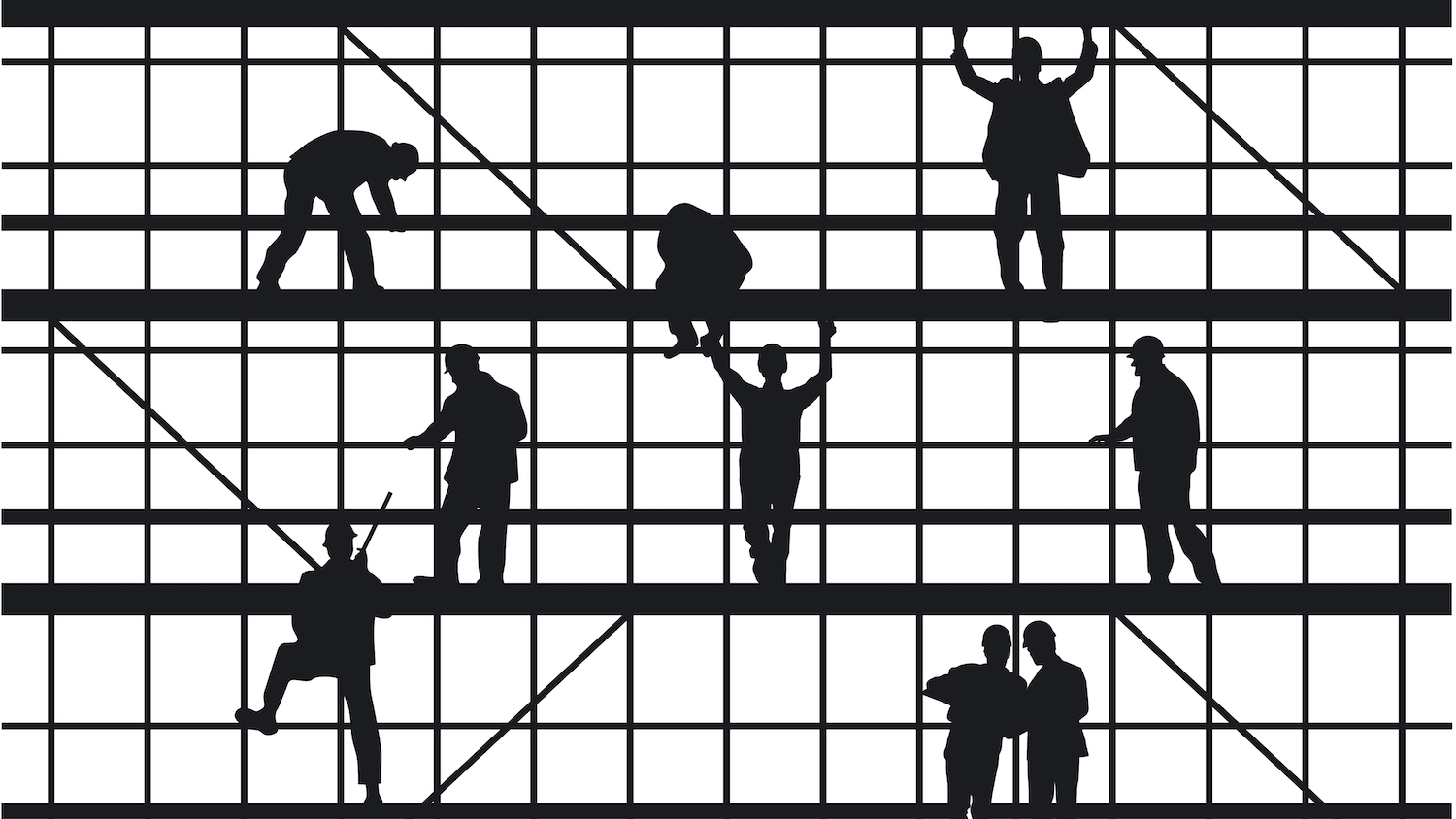
Solving the post-Brexit skills conundrum
Is a more "dynamic" immigration system the solution to tackle construction’s skills gap?
As growing skills shortages continue to impact the construction industry, easing the rules regarding the employment of migrant workers is being explored as a potential solution.
However, the latest Migration and Construction report from CITB shows that construction employers’ understanding and awareness of post-Brexit immigration rules need to be improved.
Guidance documents are available for both employers and skilled migrant workers. But CITB has called for government, the Construction Leadership Council (CLC) and the wider industry to work together to improve employers’ understanding of the points-based immigration system and make it work better for construction.
Greater clarity in this area would be of huge benefit – for employers and employees.
However, the industry’s reliance on the migrant workforce remains a hotly debated topic, which has come under increased scrutiny in recent months.
According to National Federation of Builders director of policy James Butcher, who is chair of the CLC’s Movement of People Working Group, migration is part of the solution to skills issues both now and in the future.

We need to access people rapidly to fill some of the skills gaps we have now, but because we don’t know what the future skills gaps will be, we will always need that ability
Butcher emphasises that “skills needs change quicker than our ability to address them”, which means it is crucial to be able “to rapidly access workforce”.
He explains: “We need to access people rapidly to fill some of the skills gaps we have now, but because we don’t know what the future skills gaps will be, we will always need that ability.”
Similarly, Womble Bond Dickinson managing associate Alan Kennedy feels that in the long term, there will be “a focus on trying to educate the younger workforce and give them opportunities”.
In the short term, however, massive skills shortages need to be “addressed quickly using more immediate measures”.
International recruitment
For some construction firms, the current immigration system is hampering their ability to recruit skilled workers from outside the UK.
Federation of Master Builders chief executive Brian Berry explains that the “immigration system is difficult to navigate, particularly for small companies”, which can be “put off by having to go through the process of justifying the need to bring in labour”.
He adds: “The people that need the labour are not encouraged to take them on. We do need in the short term to make it easier to bring in skilled people.”
Kennedy says: “The short-term solution is to make the immigration system more dynamic and expansive to ensure that roles which are in short supply can also be sourced from outside the UK.”
He adds: “Given the significant impact skills shortages are having on the construction industry and the wider economy, it is essential that the government considers adding further roles to the government’s shortage occupation list (SOL), in addition to the ones that are due to come in this summer.”
Occupation shortages
Occupations on the SOL are seen as essential for national priority projects such as housebuilding, school building, and hospital building. Key trades include bricklayers, roofers, carpenters, plasterers and road construction operatives.
The Migration Advisory Committee (MAC) has a key role in developing and considering the occupations on the SOL.
The MAC is an independent, non-statutory public body that advises the government on migration issues. It has a UK-wide remit and works across government, providing transparent, independent and evidence-based advice.
As part of its work, the MAC releases timed calls for evidence, requesting comments, supported by evidence, from the public, industry or representative bodies. It also meets interested stakeholders around the UK and through remote meetings.
In March, it published an interim report into labour shortages in the construction and hospitality sectors. The interim recommendations included adding certain construction and hospitality roles to the SOL.

Even if you add new jobs to the SOL, it still requires employers to get a sponsor licence, which is sometimes seen as an administrative burden
The government accepted the recommendations for the five construction roles: bricklayers and masons; roofers, roof tilers and slaters; carpenters and joiners; plasterers and dryliners; and construction and “building trades not elsewhere classified”.
The Movement of People Working Group is leading the CLC’s response to the MAC review of the SOL and has compiled a report in response.
In the report, the CLC suggests additional occupations it believes are in shortage and should be added.
However, Butcher insists that even if new occupations are added to the SOL, “we will not necessarily be able to access them in large numbers because we don’t have companies registered to be sponsors to bring them [into the industry]”.
“A tiny percentage of construction companies are licensed sponsors,” he says, which “poses a challenge”.
Employment challenges
The dearth of registered companies can be attributed to the expense involved, the bureaucratic process, and the employer responsibility of being liable for the employee.
There are also visa fees to pay, along with a health surcharge, English language requirements and reporting and recordkeeping requirements for employers.
Kennedy emphasises that, in theory, the best options for employers are non-sponsored routes which are relatively cheaper and easier to pursue.
However, if the non-sponsored route is not possible, he concedes that it would be useful “to make the current skilled worker route easier by adding occupations that are in short supply to the SOL”.
He continues: “It might not be a long-term solution to the problem, but it will give employers the option if they want to look further afield to fill any skills shortages.
“The SOL’s advantage is that visa application fees are less, making it cheaper to get a visa, and the salary threshold is lower.
“But even if you add new jobs to the SOL, it still requires employers to get a sponsor licence, which is sometimes seen as an administrative burden.”
According to Butcher, “the wider and more difficult challenge is about making the system more well-known and attractive for employers to engage with”. The first step is to get more companies registered so that they have the option.
Meanwhile, Berry adds that the government has “a prescriptive list” and “could be listening more responsively to the industry about what trades are needed”.
He says: “This is a government that’s committed to reducing immigration, so there has been a reluctance to add more trades to the SOL. But even the government accepts that business is calling out for people and we can’t train people in the time required.
“It recognises it made a commitment to reduce immigration but at the same time business needs more people if the economy is to grow, and that’s not happening at the moment. All sectors are suffering from a skills shortage.
“This country needs more skilled people coming in and we also need to make it more attractive to a wider range of people. It shouldn’t be an either or, it can be both.”
Conflicting priorities
Balancing the pressing need to deal with skills shortages in the construction industry with the government’s push to keep migration figures down is a key challenge.

This country needs more skilled people coming in and we also need to make it more attractive to a wider range of people. It shouldn’t be an either or, it can be both
The fundamental issue, according to Butcher, is that “the government is committed to the points-based immigration system and wants to see it work”.
He adds: “The political picture is difficult for us. The political landscape at the moment is to reduce migration, but there needs to be an understanding that that comes at a cost and that’s the cost of industries like construction having the right people to do the job.
“We’re not hitting our growth potential in the industry because of the lack of people.”
Looking ahead, the CLC is committed to getting the industry “more engaged with the immigration system”.
Butcher says this is about “talking honestly with the government about small tweaks within the existing system that don’t undermine it to the extent that it destroys the government’s policy priorities”.
Kennedy adds: “MAC are the gatekeepers to this, they’re the advisers to the government. All the information and suggestions are with MAC.
“The construction sector is struggling, which is having an impact on the economy. I feel the only way to fix it in the short term is to make the immigration system more dynamic, flexible and attractive.”
Despite the wide-ranging challenges, Berry remains optimistic for the future of the industry.
“The construction industry is changing because of the digital revolution and modern methods of construction,” he says.
“All this is having a big impact on how the industry operates. There will be new jobs, which hopefully will be more attractive to a wider range of people.”
Comments
Comments are closed.








Dear Sir/Madam, having been MCIOB since 2014, I must say the industry has done little for its home-grown workers. It is about time charity starts at home. The Government should plan for the future and invest in our own children with quality training, so we can build with pride once again. bringing in migrant workers is a poor short term solution.